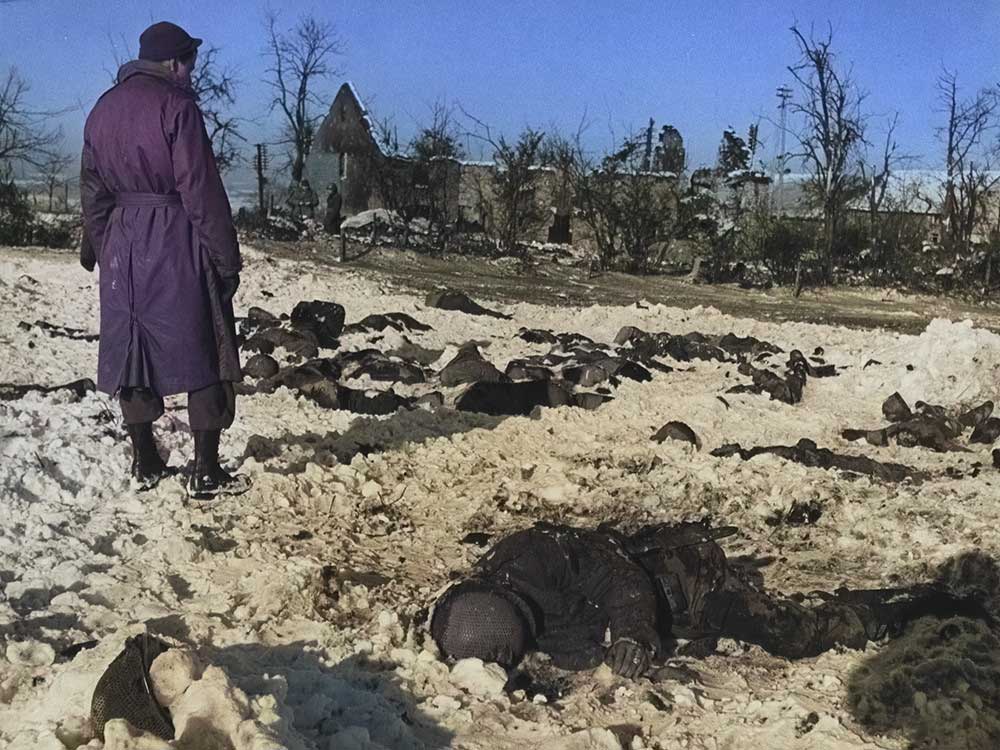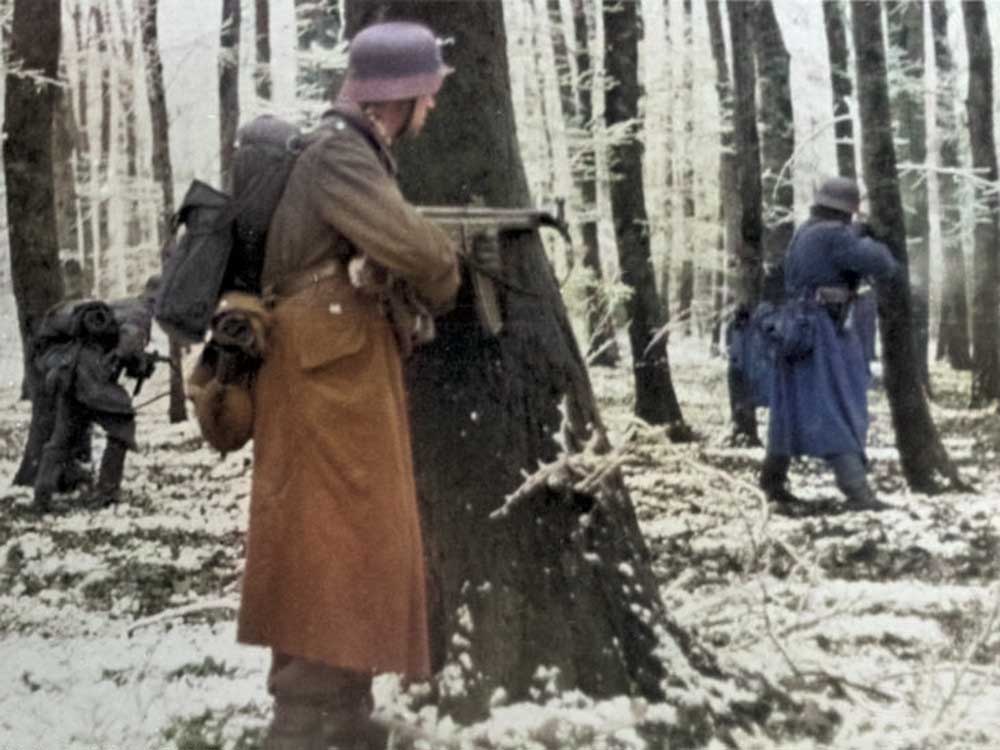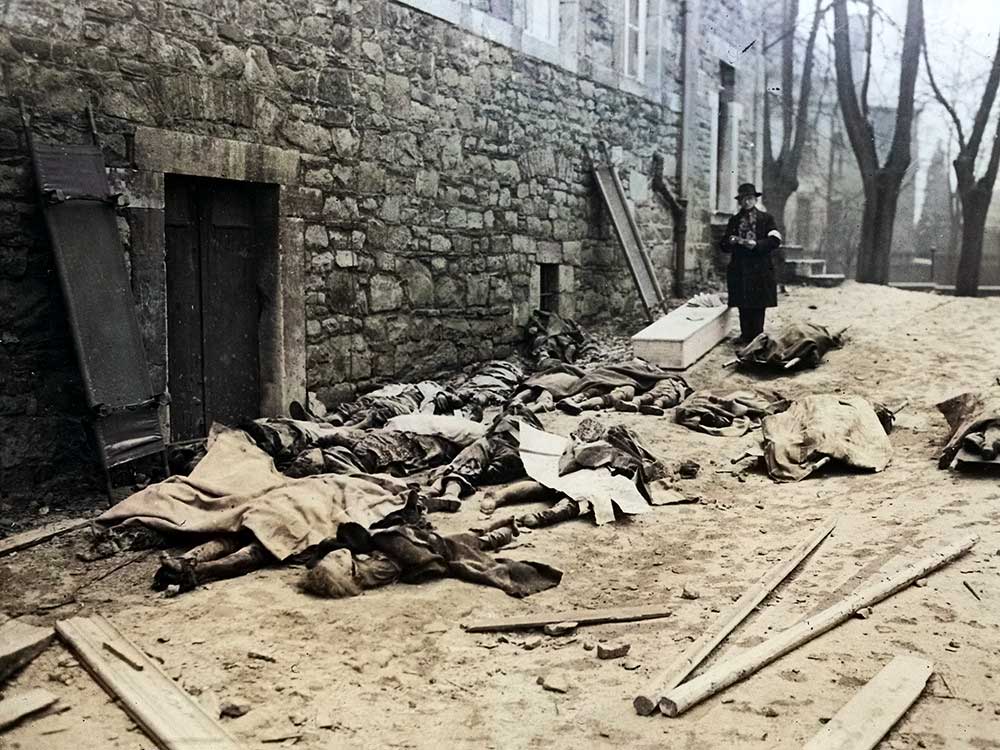As winter 1944 approached, German troops were retreating on all fronts. But on December 16, Hitler launched a surprise attack in the Belgian and Luxembourg Ardennes to break the Allied lines advancing towards Germany and to reach the port of Antwerp, where reinforcements and supplies were being transported.
At 5 am, a deluge of fire fell on the American outposts in the Ardennes. The assault of the infantry units and the armored columns followed closely.
Houffalize (B.E.), La Roche (B.E.), Saint-Vith (B.E.), Hosingen (L.U.), Wiltz (L.U.) and Berlé (L.U.) are only a few examples among the many villages that were largely destroyed. In addition, several massacres were committed, including that of Baugnez.
On December 22, Bastogne (B.E.) was surrounded. But the Reich army no longer had the means to achieve its ambitions. The 200,000 German soldiers mobilized for the offensive and supported by some 600 armored vehicles never reached their objective (notably because of a lack of fuel). Instead, they were stopped and pushed back by the Allies until La Gleize (B.E.). There, they abandoned all their weapons. A museum is now located there to testify to this with its famous command tank, the Tiger 216, taken from the besiegers.
German divisions and Allied troops fought for six weeks, from December 16, 1944, to January 25, 1945, in freezing weather conditions. The battle proved to be the deadliest ever fought by the U.S. Army, which suffered more than 100,000 casualties, but Hitler’s final offensive failed.


